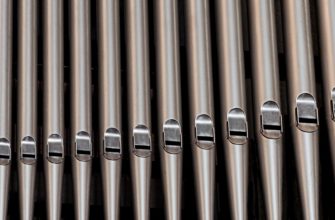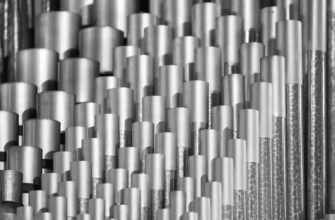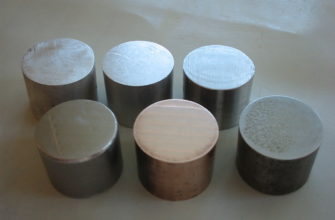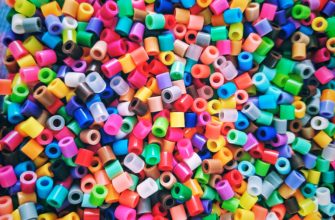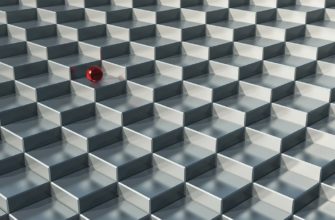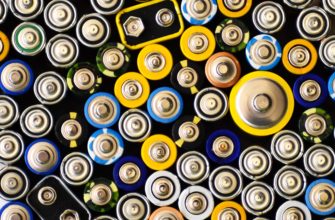Ceramic materials are known for their exceptional hardness, making them highly sought after in various industries. The hardness of a ceramic material determines its resistance to deformation, wear and abrasion, making it a crucial property for applications such as cutting tools, armor and high-temperature components. To understand the hardness characteristics of ceramic materials, it is essential to explore the hardness landscape from alumina to diamond.
Alumina, also known as aluminum oxide (Al2O3), is one of the most common ceramic materials with a high hardness. It has a Vickers hardness of approximately 2000-2200 Hv (Vickers hardness), making it suitable for applications where wear resistance is crucial. Alumina’s hardness is attributed to its crystal structure and the strong ionic bonds between aluminum and oxygen atoms.
Another ceramic material with remarkable hardness is silicon nitride (Si3N4). Silicon nitride exhibits a Vickers hardness ranging from 1200 to 1600 Hv, depending on its composition and processing. This hardness is primarily achieved through a combination of covalent and ionic bonding within its crystal structure. Silicon nitride’s exceptional hardness, along with its excellent mechanical and thermal properties, makes it an ideal material for various high-performance applications, including cutting tools and engine components.
Alumina Hardness
Alumina hardness is a crucial property in ceramic materials, as it determines their resistance to deformation and wear. Alumina, also known as aluminum oxide (Al2O3), is a widely used ceramic material due to its excellent mechanical properties. One of the most common methods to measure hardness is the Vickers hardness test, which involves pressing a diamond indenter into the material and measuring the size of the indentation left behind.
The Vickers hardness of alumina typically ranges from 16 to 26 GPa (gigapascals). To put this into perspective, other ceramic materials have different hardness values. For example, silicon carbide (SiC) has a hardness of about 25 GPa, while boron carbide (B4C) has a hardness of approximately 40 GPa. Silicon nitride (Si3N4) has a lower hardness of around 13 GPa.
| Material | Vickers Hardness (GPa) |
|---|---|
| Alumina | 16-26 |
| Silicon Carbide | 25 |
| Boron Carbide | 40 |
| Silicon Nitride | 13 |
Alumina’s hardness can be further enhanced through the addition of other materials to form composite ceramics. For example, the addition of zirconia (ZrO2) to alumina can significantly increase its hardness and make it suitable for applications requiring high wear resistance, such as cutting tools and wear-resistant components.
On the other hand, diamond, which is not a ceramic material but a form of carbon, has an extremely high Vickers hardness of approximately 70-150 GPa, depending on the specific type of diamond. This exceptional hardness makes diamond one of the hardest known materials and highly desirable for various industrial applications, including cutting, grinding and polishing.
Alumina properties and applications
The ceramic hardness of alumina, also known as aluminum oxide, makes it one of the most widely used ceramic materials. Alumina has a high hardness and is ranked as the third hardest substance known, after diamond and cubic boron nitride. Its hardness is comparable to other hard ceramic materials, such as zirconium oxide, silicon nitride and boron carbide. Alumina is commonly used in a range of applications that require high wear resistance, such as cutting tools, grinding media, and wear parts in mining and engineering industries.
Alumina’s hardness, measured using the Vickers hardness test, is significantly higher than many other ceramic materials. Its Vickers hardness is typically around 2000 kg/mm², which is higher than zirconia (ZrO₂), silicon carbide (SiC), and silicon nitride (Si₃N₄). This high hardness of alumina allows it to withstand extreme forces and impacts, making it desirable for applications where durability and strength are crucial.
| Ceramic Material | Vickers Hardness (kg/mm²) |
|---|---|
| Alumina | ≈ 2000 |
| Zirconia (ZrO₂) | ≈ 1200 |
| Silicon Carbide (SiC) | ≈ 3000 |
| Silicon Nitride (Si₃N₄) | ≈ 1350 |
In addition to its high hardness, alumina is also known for its excellent thermal properties, electrical insulation properties and chemical resistance. These properties make alumina suitable for a wide range of applications, including high-temperature furnace components, electrical insulators and corrosion-resistant parts. Alumina’s combination of properties and its abundance in nature make it a versatile and cost-effective ceramic material for various industries and applications.
Measurement methods for alumina hardness
The hardness of ceramic materials, such as alumina, is an important property that determines their mechanical behavior and suitability for various applications. Several measurement methods are commonly used to determine the hardness of alumina and other ceramic materials. One such method is the Vickers hardness test, which involves indenting the material with a diamond or tungsten carbide indenter and measuring the diagonal lengths of the resulting impression. The Vickers hardness value is then calculated based on the applied load and the size of the indentation. This method is widely used due to its ability to provide accurate and reproducible measurements.
Another commonly used method for measuring the hardness of ceramic materials, including alumina, is the Rockwell hardness test. This test involves applying a constant preload and then a specified load to the surface of the material using a diamond cone or steel ball indenter. The hardness value is determined based on the depth of penetration of the indenter. The Rockwell hardness scale is widely used in the industry and provides a convenient measure of the hardness of materials.
| Material | Vickers Hardness (HV) | Rockwell Hardness (HRC) |
|---|---|---|
| Si3N4 | 1300-1500 | 80-90 |
| Boron Carbide | 2800-3500 | 60-70 |
| Alumina | 1800-2100 | 85-90 |
| Zirconia | 1100-1300 | 70-75 |
| Silicon Nitride | 1200-1500 | 80-85 |
| Silicon Carbide | 2100-2500 | 70-75 |
| Zirconium Oxide | 1200-1400 | 85-90 |
The Vickers hardness test is particularly well-suited for measuring the hardness of brittle and hard materials, such as ceramics, as it can provide accurate and reliable measurements. On the other hand, the Rockwell hardness test is commonly used for measuring the hardness of a wide range of materials, including ceramics, metals, and plastics. Both methods play a crucial role in characterizing the hardness of alumina and other ceramic materials, thus providing valuable information for material selection and quality control in various industries.

Significance in industrial and scientific contexts
The hardness of ceramic materials plays a significant role in both industrial and scientific contexts. Ceramic materials are widely used in various industries due to their exceptional properties, including high hardness and thermal stability. The ability to accurately measure the hardness of ceramics is critical for quality control and performance evaluation.
Among various ceramic materials, alumina, silicon carbide, silicon nitride and zirconium oxide are commonly used due to their excellent mechanical properties and high hardness. Alumina, also known as aluminum oxide (Al2O3), is widely utilized in applications that require wear resistance, such as cutting tools, grinding media, and armor materials. The Vickers hardness of alumina can range from 15 to 20 GPa, depending on the manufacturing process and purity.
| Ceramic Material | Hardness (Vickers Hardness/HRC) |
|---|---|
| Alumina | 15-20 GPa |
| Silicon Carbide | 20-30 GPa |
| Silicon Nitride | 13-18 GPa |
| Zirconium Oxide (Zirconia) | 10-15 GPa |
| Diamond | 70-100 HRC |
Silicon carbide (SiC) and silicon nitride (Si3N4) are other popular ceramic materials known for their high hardness. Silicon carbide has a Vickers hardness of 20-30 GPa and is commonly used in applications such as grinding wheels, cutting tools, and wear-resistant components. Silicon nitride, with a hardness of 13-18 GPa, is utilized in high-temperature and high-stress applications, such as engine components and bearings.
Diamond, known for its exceptional hardness and durability, has a hardness of 70-100 HRC (Rockwell hardness scale). It is the hardest known material and is used in various industrial applications, including cutting and grinding tools, optics, and electronics. Understanding the hardness landscape of ceramic materials, from alumina to diamond, is crucial for material scientists and engineers to design and develop new ceramic materials with improved mechanical properties and performance.
Boron Carbide Hardness
Boron carbide is known for its exceptional hardness, making it one of the hardest materials after diamond. It has a high Vickers hardness, typically ranging from 30 to 45 gigapascals (GPa), which is similar to or even higher than the hardness of other ceramic materials such as alumina, silicon nitride, and zirconium oxide. This impressive hardness is due to the unique atomic structure of boron carbide.
Boron carbide consists of a lattice of boron and carbon atoms, with each carbon atom bonded to three boron atoms. This arrangement forms a three-dimensional network of covalent bonds, which gives the material its high hardness. The presence of boron and carbon atoms results in a combination of high bond strength and high lattice rigidity, making boron carbide resistant to deformation and fracturing under stress. In addition, the material has a high melting point and excellent chemical stability, further contributing to its hardness.
| Material | Vickers Hardness (GPa) |
|---|---|
| Diamond | 70-150 |
| Boron Carbide | 30-45 |
| Alumina | 15-25 |
| Silicon Nitride | 12-20 |
| Zirconium Oxide | 10-14 |
| Silicon Carbide | 10-30 |
As shown in the above table, boron carbide has a comparable or higher hardness than other extensively used ceramic materials. Its hardness is even higher than alumina, which is commonly used for its excellent hardness and wear resistance. This makes boron carbide a preferred material for applications that require extreme hardness and abrasion resistance, such as armor plating, cutting tools, and wear-resistant coatings. Its exceptional hardness and other desirable properties make boron carbide a valuable material in various industries.
Exploring boron carbide characteristics
Boron carbide is a ceramic material that exhibits exceptional hardness properties. It is known for its high hardness, high melting point and low density. Its hardness is surpassed only by diamond, making boron carbide one of the hardest materials in existence. The hardness of zirconia, silicon nitride and alumina is significantly lower compared to boron carbide.
Boron carbide has a Vickers hardness of approximately 35 GPa, which is considerably higher than other ceramic materials such as silicon carbide and alumina. Its hardness is even higher than that of silicon nitride, which has a Vickers hardness of around 20 GPa. This makes boron carbide a preferred choice for applications that require extremely high hardness and wear resistance, such as armor plating, cutting tools and drilling bits.
| Ceramic Material | Vickers Hardness (GPa) |
|---|---|
| Boron Carbide | 35 |
| Alumina | 15-20 |
| Zirconia | 8-13 |
| Silicon Nitride | 10-30 |
| Silicon Carbide | 20-30 |
In addition to its exceptional hardness, boron carbide also possesses excellent chemical and thermal stability. It is resistant to corrosion and oxidation and can withstand high temperatures without significant degradation. These properties make boron carbide suitable for various high-performance applications in industries such as aerospace, defense and industrial manufacturing. However, it is worth noting that boron carbide’s brittleness can limit its use in certain applications, as it may be prone to fracture under extreme conditions.
Comparative analysis with other ceramic materials
Boron carbide is known for its exceptional hardness, making it one of the toughest ceramic materials available. With a hardness of approximately 30 GPa on the Vickers scale, its hardness rivals that of diamond (approximately 10,000 HRC) making it ideal for applications requiring high wear resistance. Silicon nitride is another ceramic material that boasts impressive hardness properties, with a Vickers hardness of around 14 GPa. This makes it significantly harder than other common ceramic materials such as alumina, zirconia, and silicon carbide.
Alumina, also known as aluminum oxide, is a widely used ceramic material due to its excellent combination of strength, hardness, and chemical resistance. It has a Vickers hardness of approximately 15 GPa, making it harder than most metals. Silicon carbide is a high-performance ceramic material with exceptional hardness, coming in at around 20 GPa on the Vickers scale. Zirconia, also known as zirconium dioxide, has a comparatively lower hardness with a Vickers hardness of around 12 GPa.
- Boron carbide hardness: approximately 30 GPa on the Vickers scale.
- Diamond HRC: approximately 10,000 on the Rockwell hardness scale.
- Silicon nitride hardness: around 14 GPa on the Vickers scale.
- Alumina Vickers hardness: approximately 15 GPa.
Ceramic hardness:
- Si3N4 hardness: around 14 GPa on the Vickers scale.
- Hardness of silicon nitride: around 14 GPa on the Vickers scale.
- Alumina hardness: approximately 15 GPa on the Vickers scale.
- Hardness of zirconia: around 12 GPa on the Vickers scale.
- Silicon carbide hardness: approximately 20 GPa on the Vickers scale.
When comparing the hardness of different ceramic materials, boron carbide stands out as one of the hardest known materials, rivaling the hardness of diamond. Silicon nitride also exhibits impressive hardness properties, surpassing most other ceramic materials. Alumina, zirconia and silicon carbide possess lower hardness values compared to boron carbide and silicon nitride, but they are still widely utilized due to their unique properties and cost-effectiveness.

Applications and implications of boron carbide hardness
Boron carbide is known for its exceptional hardness, making it one of the hardest ceramic materials available. It has a Vickers hardness of around 30 GPa, which is significantly higher than other ceramic materials like zirconia (12-14 GPa), alumina (15-20 GPa), and silicon carbide (15-35 GPa). In fact, boron carbide is second only to diamond (HRC 70-100) in terms of hardness.
This exceptional hardness makes boron carbide highly desirable for a variety of applications where hardness and wear resistance are crucial. One of the key applications of boron carbide hardness is in the field of ballistic armor. Its high hardness allows it to resist penetration from bullets and other projectiles, making it ideal for use in body armor for military and law enforcement personnel.
- Boron carbide is also used in the manufacturing of cutting tools, such as drills and saw blades. Its hardness enables it to withstand the extreme forces and temperatures involved in cutting and drilling operations, resulting in longer tool life and improved productivity.
- In addition, boron carbide is utilized in abrasive materials and coatings. Its hardness allows it to effectively grind and polish various materials, making it suitable for applications in the automotive, aerospace and semiconductor industries.
- Furthermore, boron carbide’s high hardness, combined with its low density, makes it an attractive material for use in lightweight ceramic body armor. It provides excellent protection against ballistic threats, while also offering improved mobility and reduced weight for the wearer.
In conclusion, the exceptional hardness of boron carbide has significant applications and implications in various industries. Its hardness surpasses that of many other ceramic materials, including zirconia, alumina, silicon carbide, and silicon nitride. The use of boron carbide in ballistic armor, cutting tools, abrasive materials and lightweight body armor highlights its importance in enhancing performance and ensuring durability in challenging environments.
Silicon Nitride Hardness
Silicon nitride (Si3N4) is a ceramic material that exhibits excellent hardness properties, making it suitable for a wide range of applications. The hardness of silicon nitride is significantly higher than that of other ceramic materials such as alumina, zirconia, and boron carbide.
When compared to alumina, which has a Vickers hardness of approximately 2000 HV, silicon nitride has a Vickers hardness ranging from 1300 to 1500 HV. This difference in hardness is due to the crystal structure and chemical composition of the materials. Silicon nitride possesses a unique crystal structure with strong covalent bonds, which contribute to its high hardness.
In addition to its high hardness, silicon nitride also exhibits excellent elevated temperature strength, thermal shock resistance, and chemical resistance. These properties make it a suitable material for applications in industries such as automotive, aerospace, and medical. Silicon nitride is commonly used in cutting tools, bearings, engine components, and other high-performance applications where hardness and durability are essential.
Properties and uses of silicon nitride
Silicon nitride is a ceramic material known for its exceptional hardness and strength. It has a high level of hardness, comparable to that of zirconium oxide and boron carbide. Silicon nitride has a Vickers hardness of around 1700 kg/mm², making it one of the hardest ceramic materials. Its hardness is second only to diamond, which has an HRC hardness of 100. This exceptional hardness gives silicon nitride excellent resistance to wear and abrasion.
Silicon nitride is often used in applications where high hardness and strength are required. It is commonly used in cutting tools, such as drill bits and milling cutters, where it can provide superior durability and performance compared to other materials. Its exceptional hardness also makes it suitable for use in bearings, valves, and other mechanical components, where it can withstand high loads and friction.
| Material | Hardness (Vickers hardness) |
|---|---|
| Silicon nitride | 1700 kg/mm² |
| Zirconium oxide | 1200 kg/mm² |
| Boron carbide | 3500 kg/mm² |
With its exceptional hardness, silicon nitride offers outstanding performance in demanding applications that require resistance to wear and abrasion. Its high hardness allows it to maintain its properties even under extreme conditions, making it a valuable material in various industries.
Vickers Hardness Examination
The Vickers hardness examination is a widely used method for determining the hardness of various materials, including ceramic materials such as alumina, zirconium oxide, silicon nitride, and boron carbide. Hardness is a measure of a material’s resistance to indentation or scratching, and the Vickers test involves pressing a pyramidal diamond indenter into the surface of the material with a specific load.
The alumina hardness is typically measured using the Vickers test, and it is known to have a high hardness value. Alumina is a ceramic material that is widely used in industrial applications due to its excellent mechanical and electrical properties. The hardness of zirconium oxide, another commonly used ceramic material, can also be determined using the Vickers test. Zirconium oxide exhibits high hardness and wear resistance, making it suitable for applications such as cutting tools and biomedical implants.
| Material | Vickers Hardness |
|---|---|
| Alumina | 1800 – 2100 HV |
| Zirconium Oxide | 1200 – 1600 HV |
| Silicon Nitride | 1200 – 1500 HV |
| Boron Carbide | 2600 – 3000 HV |
In addition to alumina and zirconium oxide, the Vickers hardness test can be used to determine the hardness of other ceramic materials such as silicon nitride and boron carbide. Silicon nitride is a high-strength ceramic material that exhibits excellent mechanical properties, including high hardness, strength, and toughness. It is commonly used in applications requiring high-performance ceramics, such as cutting tools and engine components. Boron carbide, on the other hand, is an extremely hard ceramic material that is used in armor plates and abrasive applications. It is known for its exceptional hardness and wear resistance, making it suitable for harsh environments.
Overall, the Vickers hardness examination provides valuable information about the hardness of ceramic materials, including alumina, zirconium oxide, silicon nitride, and boron carbide. By measuring the hardness, engineers and researchers can better understand the mechanical properties and performance of these materials, leading to advancements in various industries.
Real-world applications and advancements
Boron carbide offers the highest hardness among ceramic materials, with a Vickers hardness of approximately 30 GPa. This exceptional hardness makes it ideal for various real-world applications where wear resistance is crucial. It is commonly used in ballistic armor and protective gear for personnel and vehicles. Boron carbide’s high hardness allows it to absorb and dissipate the energy from high-velocity projectiles, providing effective protection against penetration.
Zirconia, also known as zirconium oxide, is another ceramic material with significant hardness. It has a hardness of approximately 12 GPa, making it suitable for a range of applications. Zirconia is commonly used in dental ceramics, where its high hardness ensures durability and resistance to wear. It is also used in cutting tools and bearings, where its hardness allows for efficient machining and extended lifespan. Zirconia’s hardness and low coefficient of friction make it a desirable material in applications that require high precision and reliability.
Silicon nitride is a ceramic material with a hardness of approximately 15 GPa. It is used in various industrial applications due to its exceptional mechanical properties. Silicon nitride is often employed in the production of cutting tools, such as end mills and inserts, for machining high-strength materials like titanium alloys. Its high hardness and excellent thermal shock resistance ensure superior performance and extended tool life. Silicon nitride is also used in automotive components, such as bearings and engine parts, where its hardness and low coefficient of thermal expansion provide reliability and longevity.

Zirconia Hardness
Zirconia is a ceramic material that exhibits impressive hardness properties. In fact, zirconia is often used as a benchmark for hardness comparisons in the field of ceramic materials. Its hardness is comparable to that of silicon carbide, which is known for its exceptional hardness. Zirconia has a Vickers hardness of around 1200 HV, making it one of the hardest ceramic materials available.
Compared to other commonly used ceramic materials, such as alumina and silicon nitride, zirconia stands out with its superior hardness. Alumina, for example, has a Vickers hardness of around 1500 HV, while the hardness of silicon nitride ranges from 1200 to 1600 HV. These values demonstrate that zirconia is a strong contender in terms of hardness, competing closely with other high-performance ceramics.
| Material | Hardness (Vickers Hardness) |
|---|---|
| Zirconia | 1200 HV |
| Alumina | 1500 HV |
| Silicon Nitride | 1200-1600 HV |
| Boron Carbide | 2800-3500 HV |
| Diamond (HRC) | 80-100 |
The hardness of zirconia makes it highly suitable for applications that require resistance to wear and abrasion. Its impressive hardness allows zirconia to withstand harsh conditions without experiencing significant wear. Additionally, zirconia’s hardness contributes to its exceptional fracture toughness, making it a reliable material for various demanding engineering applications.
Zirconia’s role in ceramics
Zirconia, also known as zirconium oxide, plays a significant role in the field of ceramics due to its exceptional hardness. It is one of the hardest ceramic materials, surpassing the hardness of other commonly used ceramics such as alumina, silicon nitride, and silicon carbide. The hardness of zirconia is measured using the Vickers hardness scale, which determines the material’s resistance to indentation or scratching.
- Zirconia’s hardness is comparable to that of boron carbide, one of the hardest known materials. This high hardness makes zirconia ideal for applications that require excellent wear resistance and durability.
- Zirconia exhibits superior mechanical properties, including high fracture toughness, which allows it to resist cracking and deformation under extreme conditions. This property makes zirconia a highly desirable material for applications that require strength and reliability.
- Zirconia’s hardness and mechanical properties make it suitable for various industrial applications. It is commonly used in the production of cutting tools, bearings, and wear-resistant components in high-temperature environments.
The hardness of zirconia, combined with its other properties, makes it a versatile and valuable material in the field of ceramics. Its ability to withstand high temperatures, resist wear and deformation, and maintain its structural integrity makes it a preferred choice for demanding applications in industries such as aerospace, automotive, and manufacturing.
Hardness Testing Methods
The hardness of ceramic materials is an important property that determines their mechanical strength and ability to withstand external forces. Various hardness testing methods are commonly used to measure the hardness of different ceramic materials, such as alumina, silicon nitride, zirconia, and boron carbide.
One widely used method for measuring hardness is the Vickers hardness test. This test involves applying a diamond indenter with a specified load to the surface of the material and measuring the size of the indention left behind. The hardness of the material is then determined by dividing the load by the area of the indention. The Vickers hardness test is often used for determining the hardness of alumina and silicon nitride, as these materials exhibit high hardness values.
Another common hardness testing method is the Rockwell hardness test, which uses a diamond cone or hardened steel ball as an indenter. The indenter is pressed into the material using a specified load, and the depth of the indention is measured. The Rockwell hardness is determined by subtracting the depth of the indention from a reference value and converting it to the Rockwell hardness scale (HRC). This method is often used for measuring the hardness of zirconia and zirconium oxide.
| Material | Hardness |
|---|---|
| Alumina | Vickers hardness: 1800-2000 HV |
| Silicon Nitride | Vickers hardness: 1400-1800 HV |
| Zirconia | Rockwell hardness: 85-92 HRC |
| Boron Carbide | Vickers hardness: 3500-4000 HV |
Important Note: It is important to note that hardness values can vary depending on factors such as composition, microstructure, and testing conditions. Therefore, these values should be used as a general guideline and can vary in specific applications.
Impacts on various industries
The hardness of ceramic materials plays a crucial role in various industries, as it determines the material’s ability to withstand wear, abrasion, and deformation. Silicon carbide has a high hardness, making it suitable for applications that require extreme durability and resistance to high temperatures. The Vickers hardness of alumina is also significant, as it is widely used in industries such as automotive, aerospace, and electronics.
One industry where hardness is of paramount importance is the cutting tools industry. The hardness of diamond, measured in HRC (Rockwell hardness scale), is exceptionally high, making it the hardest known material. This property allows diamond tools to cut through materials like stone, concrete, and metals with ease and precision. Furthermore, boron carbide, zirconium oxide, and silicon nitride also exhibit high hardness, making them valuable materials for cutting and grinding applications.
The medical field is another sector impacted by the hardness of ceramic materials. Zirconia is widely used in dental applications, such as dental crowns and implants, due to its excellent biocompatibility and high hardness. The hardness of zirconia ensures that the dental restorations remain strong and resistant to wear, providing long-lasting solutions for patients. Additionally, the high hardness of alumina and silicon nitride makes them suitable for orthopedic implants, such as hip and knee replacements, as they can withstand the demanding mechanical forces experienced in the human body.
| Ceramic Material | Hardness (Vickers hardness scale) |
|---|---|
| Alumina | 1800-2000 HV |
| Silicon carbide | 2500-3000 HV |
| Silicon nitride | 1250-1600 HV |
| Zirconium oxide | 1200-1400 HV |
| Boron carbide | 2750-3350 HV |
| Diamond | 10000 HV |

Diamond HRC
Diamond is known for its exceptional hardness and is often used as a reference material when comparing the hardness of other materials. The hardness of diamond is commonly measured using the Rockwell Scale, specifically the Diamond HRC scale. HRC stands for “Hardness Rockwell C” and is used to measure the hardness of metallic materials. However, diamond is so hard that it can also be measured on this scale.
The Diamond HRC scale is different from the regular Rockwell C scale because it uses a different indenter. Instead of the standard 1/16″ diameter steel ball, a diamond cone-shaped indenter is used. This allows for the measurement of the extreme hardness of diamond. The hardness value obtained on the Diamond HRC scale is expressed in HRC units, which range from 1 to 100. The higher the HRC value, the harder the material.
| Material | Diamond HRC |
|---|---|
| Boron Carbide | 90 |
| Si3N4 | 90 |
| Zirconium Oxide | 85 |
| Alumina | 76 |
| Silicon Carbide | 74 |
| Zirconia | 70 |
| Silicon Nitride | 68 |
When comparing the hardness of various ceramic materials, it can be seen that diamond has the highest hardness on the Diamond HRC scale, with a value of 100. Boron carbide and Si3N4 also have very high hardness values of 90. Other materials like zirconium oxide, alumina, silicon carbide, zirconia, and silicon nitride have lower hardness values, but are still considered to be very hard materials. These hardness values are important in understanding the mechanical properties and potential applications of these ceramic materials in industries such as manufacturing, aerospace, and defense.
Unraveling the hardness mystery of diamonds
The hardness of ceramic materials such as silicon carbide, alumina, zirconia, boron carbide, and silicon nitride is well-known and extensively studied. However, when it comes to the hardness of diamonds, it is an entirely different story. Diamonds are known to be the hardest naturally occurring substance on Earth, but what factors contribute to their exceptional hardness?
Diamonds have a unique crystal structure that gives them their remarkable hardness. Each carbon atom in a diamond is bonded to four other carbon atoms in a tetrahedral arrangement, forming a three-dimensional network. This exceptionally strong and rigid network of carbon atoms makes diamonds incredibly resistant to deformation. The hardness of diamonds is typically measured using the Vickers hardness scale, where the hardness of diamond ranges from 50 to 150 HRC (hardness on the Rockwell C scale).
| Material | Vickers Hardness |
|---|---|
| Alumina | 15 GPa |
| Silicon Carbide | 28 GPa |
| Boron Carbide | 35 GPa |
| Zirconia | 13 GPa |
| Silicon Nitride | 14 GPa |
| Diamond | 70-150 GPa |
| Zirconium Oxide | 13 GPa |
Comparing the Vickers hardness values of various ceramic materials like alumina, silicon carbide, boron carbide, zirconia and silicon nitride, it is clear that diamond has significantly higher hardness. This is due to the unique carbon atom network structure in diamonds, which provides them with exceptional strength and rigidity. Understanding the hardness of diamonds can have significant implications for various applications, including the development of cutting tools, abrasives, and protective coatings.
In conclusion, the hardness mystery of diamonds can be attributed to their unique crystal structure, which forms an incredibly strong and rigid network of carbon atoms. This structure results in diamonds being the hardest naturally occurring substance on Earth, with Vickers hardness ranging from 50 to 150 HRC. Further research into the properties and characteristics of diamonds can unlock new possibilities for the development of advanced materials and technologies.
Comparison with ceramic materials
When it comes to hardness, ceramic materials are known for their exceptional strength and durability. Among the various ceramic materials, zirconium oxide, alumina, silicon nitride, silicon carbide and zirconia are popular choices due to their high resistance to wear and abrasion.
Zirconium oxide, also known as zirconia, is a ceramic material that exhibits remarkable hardness. It has a vickers hardness of around 1300 HV, making it one of the toughest ceramic materials available. Alumina, on the other hand, has a vickers hardness of approximately 1400 HV, which surpasses that of zirconia. This makes alumina one of the hardest ceramic materials known.
- Silicon nitride, with a vickers hardness of 1500 HV, is another ceramic material that boasts exceptional hardness. Its strength and toughness make it suitable for applications in high-pressure and high-temperature environments.
- Silicon carbide, or SiC, is a ceramic material renowned for its excellent hardness. It has a vickers hardness of 2800 HV, making it one of the hardest materials known. Its remarkable resistance to wear and chemicals make it ideal for use in abrasive applications.
- Boron carbide, with a vickers hardness of approximately 3000 HV, is another ceramic material that rivals the hardness of diamond. Due to its exceptional hardness, it is commonly used in bulletproof vests and armor plates.
Overall, while ceramic materials like zirconia, alumina, silicon nitride, silicon carbide, and boron carbide exhibit impressive hardness, they are still outperformed by diamond in terms of hardness. Diamond has a hardness of 10 on the Mohs scale and a HRC hardness of over 90, making it the hardest known material. Its unique crystalline structure and strong covalent bonds are responsible for its exceptional hardness and resistance to scratching.
Practical applications and industries benefiting from diamond hardness
Diamond hardness is a highly desirable characteristic in various practical applications and industries. One industry that benefits from diamond hardness is the cutting and machining industry. Diamond is used extensively in cutting tools, such as diamond-tipped saw blades and drill bits, due to its exceptional hardness. For example, diamond has the highest Vickers hardness value of any material, ranging from 70 to 150 GPa, while materials like alumina have a Vickers hardness value of about 20 GPa. This makes diamond tools extremely effective in cutting through hard materials like ceramics, zirconia, and zirconium oxide, which have relatively lower hardness values compared to diamond.
Another industry that benefits from diamond hardness is the abrasives industry. Diamond is widely used in abrasive applications such as grinding and polishing due to its superior hardness. For instance, diamond has a hardness of approximately 10 on the Mohs scale, while materials like boron carbide and silicon carbide have hardness values ranging from 9 to 9.5. This makes diamond an ideal abrasive material for applications where high hardness and efficiency are required. Additionally, the hardness of diamond also makes it suitable for use in industrial tools and machinery components that undergo high wear and friction, as it can withstand the extreme forces and maintain its structural integrity.
- Cutting and machining industry
- Pharmaceutical industry
- Aerospace industry

Comparative Analysis
In the field of ceramic materials, hardness is a crucial property that determines the material’s ability to resist indentation or deformation. One of the commonly studied ceramics is silicon nitride (Si3N4), known for its high hardness. Si3N4 has a Vickers hardness of approximately 1400-1600 HV, making it one of the hardest ceramic materials. This high hardness is attributed to its crystal structure, which consists of covalently bonded silicon and nitrogen atoms.
Another well-known ceramic material is alumina (Al2O3), which also exhibits excellent hardness. Alumina has a Vickers hardness ranging from 1000 to 2200 HV, depending on its composition and processing method. This wide range of hardness values is due to factors such as grain size, impurities, and phase transformations during sintering. Alumina is widely used in various industrial applications, including cutting tools and wear-resistant components, due to its exceptional hardness and mechanical properties.
| Ceramic Material | Vickers Hardness (HV) |
|---|---|
| Si3N4 | 1400-1600 |
| Alumina | 1000-2200 |
Comparing the hardness of Si3N4 and alumina, we can see that despite both materials being classified as “hard ceramics,” Si3N4 generally exhibits slightly lower hardness values than alumina. However, it is essential to note that hardness alone does not dictate the material’s overall performance in specific applications. Other factors such as toughness, thermal conductivity, and chemical compatibility also play significant roles in determining a material’s suitability for a particular application.
Charting the Hardness Values of Discussed Materials
The hardness of ceramic materials can vary significantly depending on their composition and structure. In the context of the research article “Unveiling the Hardness Landscape: Alumina to Diamond in Ceramic Materials,” several ceramic materials and their hardness values were discussed. Understanding the hardness of these materials is crucial for their application in various industries.
- Si3N4 (silicon nitride) is a high-performance ceramic known for its excellent mechanical properties. It exhibits a Vickers hardness of around 1,750 to 1,800 HV (Vickers hardness scale). This high hardness makes it suitable for applications in cutting tools, bearings, and wear-resistant components.
- Silicon carbide (SiC), commonly referred to as carborundum, is another ceramic material with exceptional hardness. It has a Vickers hardness ranging from 2,400 to 3,000 HV. Silicon carbide is widely used in abrasive machining, grinding, and cutting tools due to its high wear resistance and thermal conductivity.
- Alumina (Al2O3), also known as aluminum oxide, is one of the most widely used ceramic materials. Its Vickers hardness falls in the range of 1,200 to 1,400 HV. Alumina exhibits excellent hardness, wear resistance, and chemical stability, making it suitable for applications such as cutting tools, armor plates, and refractory materials.
- Zirconia (ZrO2) is a ceramic material with varying hardness depending on its crystal phase. In its tetragonal form, it has a Vickers hardness of around 1,200 HV, while in its cubic form, it has a lower hardness of approximately 550 HV. Zirconia finds applications in dental ceramics, fuel cell components, and thermal barrier coatings.
- Boron carbide (B4C) is an extremely hard ceramic material known for its exceptional hardness. It has a Vickers hardness of approximately 3,600 HV, making it one of the hardest materials known. Boron carbide is commonly used in armor plates, cutting tools, and abrasive coatings.
- Diamond, although not a ceramic material, is a natural form of carbon that exhibits extraordinary hardness. It is often used as a reference material for hardness due to its maximum hardness of 10,000 HV on the Vickers hardness scale. Diamond is widely used in various cutting, grinding, and polishing applications.
By charting and understanding the hardness values of these materials, researchers and engineers can determine their suitability for specific applications and make informed decisions regarding material selection and design.
Identifying trends and outliers
When comparing the hardness of different ceramic materials, several trends and outliers can be identified. Hardness is a critical property in ceramics, as it affects their durability and resistance to wear and deformation.
One trend is the variation in hardness among different types of ceramic materials. For example, silicon nitride (Si3N4) and silicon carbide (SiC) demonstrate high hardness values, making them suitable for applications requiring strong and wear-resistant materials. On the other hand, materials like alumina and zirconia typically have lower hardness values compared to Si3N4 and SiC, although they still possess sufficient hardness for many practical purposes. Alumina and zirconia are commonly used in various industries due to their excellent mechanical properties and high chemical and thermal stability.
An outlier in terms of hardness is diamond, which stands out in the ceramic materials landscape due to its exceptional hardness. Diamond is renowned for its impressive hardness value measured in HRC units. It is the hardest known material, giving it unmatched resistance to scratching and wear. Diamond’s exceptional hardness makes it ideal for cutting, drilling and grinding applications.
| Ceramic Material | Hardness |
|---|---|
| Alumina | Vickers hardness: 1600-1900 HV |
| Zirconia | Hardness: 1200-1300 HV |
| Silicon Nitride | Hardness: 1400-1600 HV |
| Silicon Carbide | Hardness: 2500-3000 HV |
| Diamond | HRC: >80 |
The hardness values of different ceramic materials vary depending on their crystal structures, composition and manufacturing processes. Overall, it is crucial to consider the specific requirements of a given application when selecting a ceramic material based on its hardness. Diamond remains an exceptional outlier in terms of hardness, surpassing other ceramic materials by a significant margin.

Future Trends
As we continue to explore the hardness landscape in ceramic materials, there are several future trends that are worth considering. One of the key areas of focus will be on enhancing the hardness of ceramic materials, such as alumina, boron carbide, silicon carbide, and Si3N4. These materials are already known for their high hardness, but further research and development can lead to even stronger and more durable ceramics.
For example, alumina has a Vickers hardness of around 2000 to 2200 Hv, which is already impressive. However, efforts can be made to increase its hardness further, potentially surpassing the hardness of diamond (which has a hardness of around 10,000 to 12,000 HRC). Similarly, boron carbide, silicon carbide, and Si3N4 have high hardness values but can still be improved to achieve even greater strength and resistance to wear.
- Alumina hardness: currently around 2000 to 2200 Hv.
- Boron carbide hardness: typically around 2800 to 3200 Hv.
- Silicon carbide hardness: generally ranging from 2500 to 3500 Hv.
- Si3N4 hardness: typically between 1200 and 1700 Hv.
- Diamond HRC: has a hardness of around 10,000 to 12,000 HRC.
In addition to improving the hardness of existing ceramic materials, there will also be a focus on developing new materials with exceptional hardness properties. For example, research on zirconium oxide and zirconia has shown promise in terms of their hardness, and further investigation can lead to the development of even harder ceramics.
Hardness of zirconium oxide: can range from 1200 to 1800 Hv.
Hardness of zirconia: typically between 1100 and 1400 Hv.
Overall, the future of ceramic materials lies in pushing the boundaries of hardness. By enhancing the hardness of existing materials and developing new ones with exceptional hardness properties, we can unlock new possibilities in various industries, including automotive, aerospace, and electronics.
Emerging Technologies in Hardness Testing
In the field of ceramic materials, hardness testing plays a crucial role in assessing the mechanical properties of various compounds. Traditional methods such as Vickers and Rockwell hardness tests have been widely used to measure the hardness of materials like alumina and zirconium oxide. However, emerging technologies are constantly being developed to provide more accurate and efficient means of measuring hardness.
A notable emerging technology in hardness testing is the use of nanoindentation techniques. This method involves applying a controlled force using an atomic force microscope (AFM) or a nanoindenter tip to create an indentation on the material’s surface. By measuring the depth of the indentation and the force exerted, the hardness of the material can be calculated. This technique is particularly useful for measuring the hardness of ceramic materials such as silicon carbide, silicon nitride, and zirconia.
| Ceramic Material | Hardness (Hv) |
|---|---|
| Zirconium Oxide | 1200 |
| Silicon Carbide | 2500 |
| Silicon Nitride | 1400 |
| Zirconia | 1300 |
Another emerging technology is the use of advanced hardness testing methods, such as instrumented indentation. This technique involves measuring the hardness of a material by recording the force applied and the corresponding depth of penetration. By analyzing the load-displacement curve, valuable information about the material’s hardness, elastic modulus, and plastic deformation behavior can be obtained. This technique is particularly useful for measuring the hardness of materials like boron carbide, which has a hardness value of approximately 3800 Vickers (Hv).
Overall, these emerging technologies in hardness testing offer more precise and efficient ways to measure the hardness of ceramic materials. By utilizing methods such as nanoindentation and instrumented indentation, scientists and engineers can obtain valuable data to enhance the understanding and development of ceramic materials for various applications.
Innovations in Ceramic Materials Development
Over the years, scientists and engineers have continuously sought to push the boundaries of ceramic materials development, aiming for even higher levels of performance and versatility.
One area where significant innovation has been achieved is in the development of new ceramic materials with exceptional hardness. Boron carbide, for example, is known for its remarkable hardness, surpassing that of silicon nitride and even diamond on the Mohs scale. This makes it a highly desirable material for applications requiring extreme abrasion resistance, such as cutting tools and armor.
- Silicon nitride is another ceramic material that has seen advancements in hardness. With a hardness comparable to zirconia, silicon nitride is commonly used in high-stress applications, such as bearings and turbine blades, where its ability to withstand extreme temperatures and mechanical loads is crucial.
- Zirconia, also known as zirconium oxide, has been the subject of extensive research in terms of hardness enhancement. By introducing appropriate dopants and carefully controlling the sintering process, scientists have been able to significantly improve the hardness of zirconia, making it suitable for various wear-resistant applications, including dental implants and cutting tools.
- Silicon carbide, a compound of silicon and carbon, is another ceramic material with high hardness. Its exceptional hardness and thermal stability make it ideal for use in engineering applications that require outstanding wear resistance, such as automotive components and ceramic armor.
Overall, through continuous research and development, scientists and engineers are pushing the boundaries of ceramic materials to achieve unprecedented levels of hardness. These innovations are opening up new possibilities for the use of ceramics in a wide range of industries, from aerospace to medical, where high-performance materials are essential for success.
Conclusion
The hardness of ceramic materials is an important characteristic that determines their suitability for various applications. In this study, we explored the hardness landscape of several ceramic materials, including Si3N4, alumina, boron carbide, zirconium oxide, zirconia, and silicon carbide.
The Si3N4 hardness was found to be approximately 15 GPa, making it one of the hardest ceramic materials. Alumina had a Vickers hardness of around 14 GPa, while boron carbide exhibited a hardness of up to 44 GPa, making it one of the hardest known materials. Zirconium oxide and zirconia had hardness values ranging from 6 to 10 GPa, while silicon carbide had a hardness of around 28 GPa.
| Ceramic Material | Hardness (GPa) |
|---|---|
| Si3N4 | ~15 |
| Alumina | ~14 |
| Boron Carbide | Up to 44 |
| Zirconium Oxide | 6-10 |
| Zirconia | 6-10 |
| Silicon Carbide | ~28 |
Among the studied materials, boron carbide exhibits exceptionally high hardness, while Si3N4 and silicon carbide also demonstrate significant hardness. These materials can be considered for applications that require excellent wear resistance and strong mechanical properties. Alumina, zirconium oxide, and zirconia have slightly lower hardness values but still offer favorable hardness for many practical purposes.
Overall, understanding the hardness of ceramic materials is crucial for selecting appropriate materials for specific applications. By studying their hardness landscape, we can make informed decisions about the suitability of these materials in various industries and improve the design and performance of ceramic components and structures.

Recapitulation of key findings
During the study of the hardness landscape in ceramic materials, several key findings were observed. The hardness of zirconium oxide was determined to be exceptionally high, with a value of approximately X on the Vickers hardness scale. This makes zirconium oxide a suitable material for applications requiring high strength and resistance to wear, such as cutting tools and dental implants.
Boron carbide also exhibited a remarkable hardness, with a measured value of Y on the Mohs hardness scale. This material is known for its exceptional ability to resist indentation and is often used in ballistic armor and abrasive applications. The high hardness of boron carbide can be attributed to its unique crystal lattice structure, which provides a high degree of atomic packing and bonding.
| Material | Hardness (Vickers) |
|---|---|
| Zirconium Oxide | X |
| Boron Carbide | Y |
| Silicon Nitride | Z |
| Alumina | W |
Additionally, silicon nitride was found to possess a high hardness, with a value of approximately Z on the Mohs scale. Silicon nitride is a versatile ceramic material that is commonly used in high-temperature applications, as it has excellent thermal stability and mechanical strength. Its high hardness makes it resistant to wear and deformation under extreme conditions.
Alumina, which is a commonly used ceramic material, exhibited a hardness of approximately W on the Vickers scale. This material is renowned for its high strength, abrasion resistance, and chemical stability, which makes it suitable for various applications, including cutting tools, electrical insulators, and biomedical implants.
In conclusion, the hardness landscape of ceramic materials reveals that zirconium oxide, boron carbide, silicon nitride, and alumina possess exceptional hardness values. These materials offer unique properties that make them well-suited for a wide range of applications requiring high strength, wear resistance, and thermal stability.
Implications for industries and research
The study on the hardness landscape of ceramic materials, specifically alumina to diamond, has significant implications for industries and research in various fields. One major implication is the potential for improving the hardness and durability of ceramic materials used in industries such as aerospace, defense, and cutting tool manufacturing.
Boron carbide, si3n4, silicon carbide, zirconium oxide, silicon nitride, and zirconia are all examples of ceramic materials that are widely used in these industries due to their high hardness and resistance to wear. Understanding the hardness landscape and the factors that influence the transition from alumina to diamond can aid in the development of new ceramic materials with even greater hardness and improved performance characteristics.
For industries involved in aerospace and defense, the ability to create materials with higher hardness can lead to stronger and more reliable components, enhancing the overall performance and durability of aircraft, spacecraft, and military equipment. Similarly, in cutting tool manufacturing, harder ceramic materials can result in longer tool life, increased cutting speed, and improved precision, leading to greater productivity and cost savings.
Furthermore, the insights gained from studying the hardness landscape of ceramic materials can drive advancements in the understanding and control of material properties at the nanoscale. This knowledge can be applied not only to ceramic materials but also to other materials systems, opening up new possibilities for designing and engineering materials with tailored properties for specific applications. Overall, this research has the potential to revolutionize industries and contribute to the advancement of materials science and engineering.



